Cooking with Chard and Mediterranean Greens from the Garden
Wednesday, April 15, 2015

Chard with filling ready to roll (photo © linda dalal sawaya)
Italians use it with pasta, of course; Egyptians call it colcas and cook it with taro root and coriander in a broth; while in the Arabic I grew up with, it is called al-siliq or siliq, from which the Spanish word for chard, acelgas originates. Spaniards cook acelgas with beans, sausage, or potatoes; Mexican recipes include a sopa with macaroni and a braised version called acelgas guisadas. Tunisians combine chard into a delicious sounding chick pea, tomato, and onion ragout called morshan, and the Iraqis call their version of this yahne. The French are famous for a rich tart including this nutritious green called tart aux blettes, with eggs, crème fraîche and cheese. Asians from India to Japan have numerous ways of seasoning and preparing this versatile vitamin and phytonutrient-rich green leafy vegetable.
We Lebanese and other Arab countries use it braised or sautéed with a classic dressing of garlic mashed into a paste with salt, lemon juice, and olive oil—fabulous on any steamed or sautéed greens including chard, spinach, kale, asparagus, artichokes, and beet greens. It is added to lentil soups at the last minute for flavor and nutrition. The ribs and stems trimmed from chard leaves to make rolls, are steamed or sautéed and are drizzled with tahini sauce.
If you're not growing your own chard, our local farmer's markets are abundant with these lush organic greens. Whether you use green, red, yellow, or rainbow chard in Mediterranean, Asian, or any inspired recipe, the options are endless. Chard is truly a versatile and beneficial fresh ingredient to keep on hand and in the garden for your international culinary adventures.
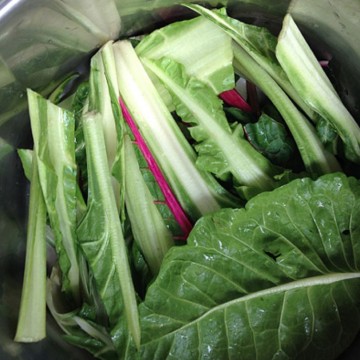
Chard stems and leaves lining pot bottom (photo © linda dalal sawaya)
WARAQ SILIQ (Stuffed Vegan Chard Rolls) recipe from Alice's Kitchen
A recipe from Alice's Kitchen featuring chard as a spring time substitute for summer time grape leaves in making stuffed rolls—vegan or lamb with rice. Here's how to make the vegan version, called waraq siliq (meaning chard leaves) using lots of Italian parsley, spearmint, green onions, tomato, garbanzo beans and rice rolled in a leaf and then cooked in a pot. Make more than you think you'll need, as they're fantastic the next day, either reheated, at room temperature, or cold. Sahtein! (Arabic for good health!). Enjoy!
Ingredients
20 or so chard leaves (red or green)
Filling
1 cup brown rice, soaked and rinsed
1 bunch green onions, or 1 Spanish or red onion
1 bunch Italian parsley, finely chopped
½ bunch spearmint, finely chopped
1 cup tomatoes, finely chopped (use organic canned since it's not summer)
½ cup garbanzo beans, precooked or canned, drained and rinsed
1 t. salt
½ t. black pepper
¼ t. cayenne pepper
¼ cup lemon juice
⅛ cup olive oil, extra-virgin cold pressed
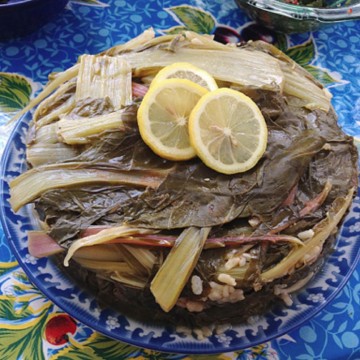
Lebanese chard roll platter (photo © linda dalal sawaya)
4 cloves garlic
⅓ cup lemon juice
2 ½ cups water
⅛ cup olive oil
Pick, rinse, and remove central rib from chard leaves. Layer ribs, stems, and small leaves in the bottom of a large pot.
1. In a large bowl, add seasonings to rice and mix well; add lemon juice and olive oil. Mix in chopped vegetables and garbanzos; taste and adjust seasoning.
2. Place a leave with rib side down on a clean surface and add stuffing mixture along the bottom edge leaving room on the sides to fold leave in holding the mix.
3. Roll each leaf with stuffing up tightly, like a carpet and place on top of the ribs, tucking them close to each other in the pot forming rows. Each layer is perpendicular to the layer
below it; continue stacking the pot until all the filling is used up.
4. Nestle whole garlic cloves in between them and pour water, lemon juice, and olive oil over them. Press a plate on top of the rolls, top side down, to hold them together during cooking.
5. Cook over high heat until boiling, then simmer until rice is done, approximately 45 minutes for brown rice. Let stand in pot for 15 minutes before serving as a main dish or appetizer.
Note: My garden's chard leaves are huge, so the rolls are fairly large, much larger than grape leaves. If the leaf is small, two leaves can be overlapped to widen so as to cover the gap where the rib was removed.

Related Slideshow: 10 Things You May Not Know About Truffles
The annual Oregon Truffle Festival is set to kick off in January in Portland and Eugene. But before attending the festival, here are 10 things you may not know about truffles. (All photos were provided by the Oregon Truffle Festival).

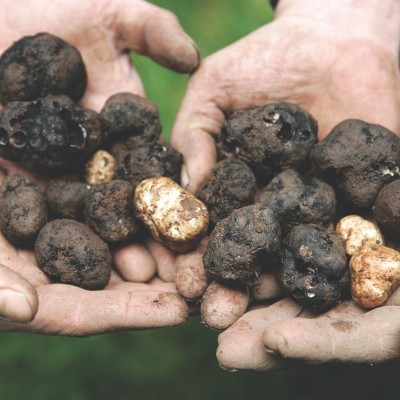
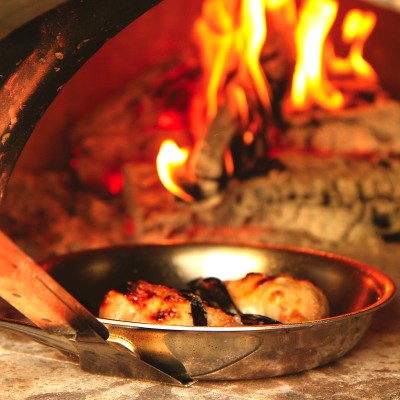
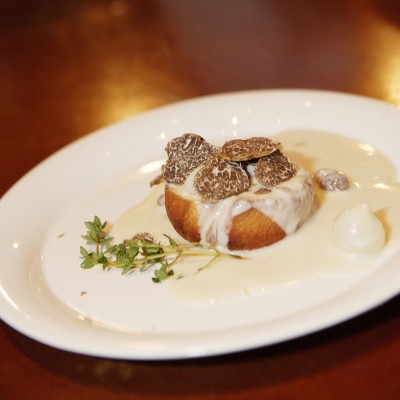
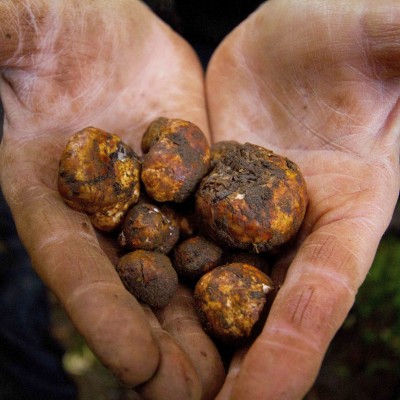
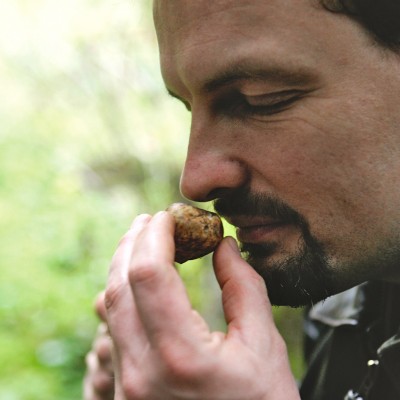
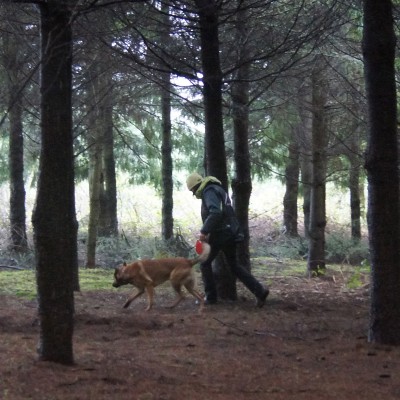
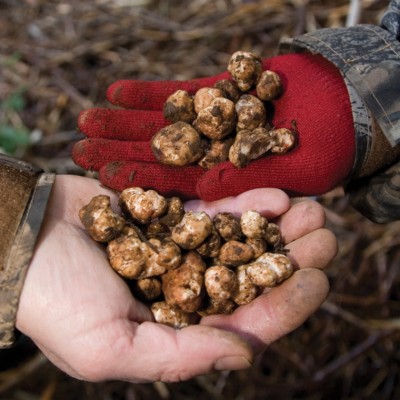
















Follow us on Pinterest Google + Facebook Twitter See It Read It